Birdfinding.info ⇒ Locally common in several parts of its range: the western Llanos; the arid littoral of northern Colombia and northwestern Venezuela; the savannas of Roraima and western Guyana; the ABC Islands; and especially Tobago. Consistent sites include Bubali Bird Sanctuary (Aruba); Washington Slagbaai National Park (Bonaire); everywhere on Curaçao; Little Tobago Island; Cuffie River Nature Retreat and Flagstaff Hill (Tobago); the Aripo savannas (Trinidad); Los Flamencos Wildlife Reserve (Colombia); and the Estrada Perdida in Viruá National Park (Roraima, Brazil). Rare on Martinique, mostly at La Caravelle Nature Reserve.
White-tailed Nightjar
Hydropsalis cayennensis
Northern South America and adjacent parts of Central America and the West Indies, where it occurs in semiopen habitats: savanna, scrub, open woodlands, and forest edge.
In Central America, found nearly throughout the Pacific slope of Costa Rica and Panama, and at least locally or occasionally on some parts of the Caribbean slope.
In South America, found mainly in four regions: (1) Caribbean lowlands from Colombia east to French Guiana; (2) intermontane valleys of western Colombia and northernmost Ecuador; (3) the Llanos of Colombia and Venezuela; and (4) the Tepui region and adjacent savannas of Roraima and Guyana.
In the West Indies: the ABC Islands, Isla Margarita, Trinidad, Tobago, and a small relict population on Martinique. Has also been recorded as a vagrant to Barbados and Puerto Rico.
Identification
A small nightjar with a broad tawny nuchal collar and strongly divergent male and female plumages.
Male has contrasty upperparts and pale underparts—but these vary from mostly white to mottled. Typically shows bold buffy shoulder straps and rows of white spots on the wing coverts.
The male’s undertail is white with dark band near the base that is visible when the undertail is in full view. Its uppertail is plain when folded and shows white outer tail feathers when spread.
In flight, the male shows bright white bands on the primaries, and the underwing is largely white.
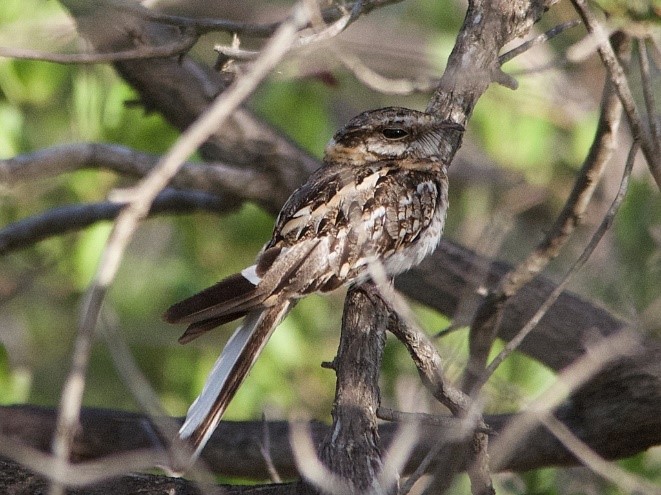
White-tailed Nightjar, male. (Bubali Bird Sanctuary, Aruba; September 29, 2017.) © Michael Tromp
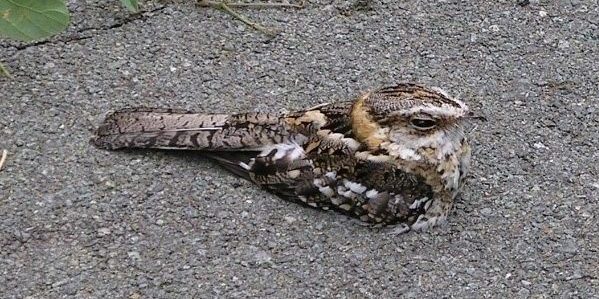
White-tailed Nightjar, male showing broad tawny nuchal collar, buffy shoulder strap, and rows of white spots on wing coverts. (Lowlands, Tobago; May 2, 2006.) © Jack Piper
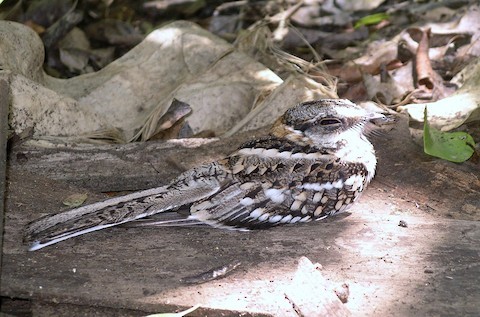
White-tailed Nightjar, male showing tawny nuchal collar, buffy shoulder strap, rows of white spots on wing coverts, and white edge on outer tail feathers. (Little Tobago, Trinidad & Tobago; March 21, 2006.) © Joe Sebastiani

White-tailed Nightjar, male. (Bubali Bird Sanctuary, Aruba; July 25, 2016.) © Michiel Oversteegen
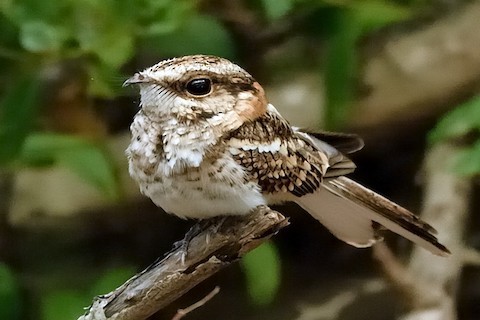
White-tailed Nightjar, male with mostly white underparts. (Bubali Bird Sanctuary, Aruba; February 13, 2017.) © Michiel Oversteegen

White-tailed Nightjar, male showing rows of white spots on wing coverts and part of the white band on the primaries. (Little Tobago, Trinidad & Tobago; May 8, 2014.) © William Stephens
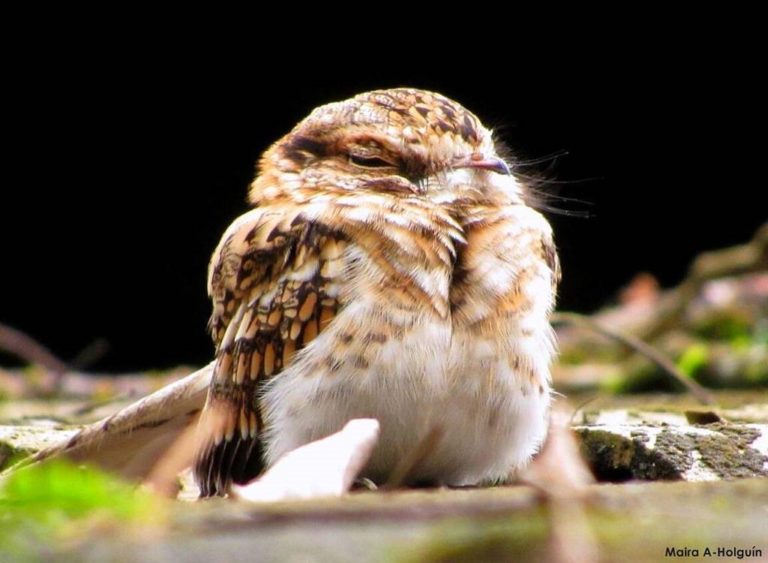
White-tailed Nightjar with mostly white underparts. (Villavicencio, Meta, Colombia; October 28, 2017.) © Maira Alejandra Holguín Ruiz
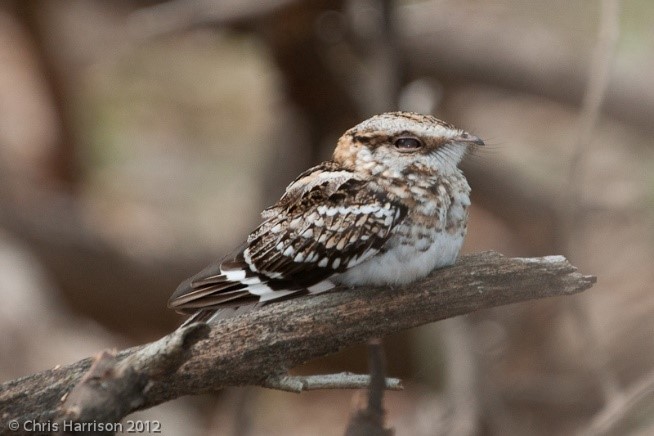
White-tailed Nightjar, male with mostly white underparts and limited mottling on the breast. (Washington Slagbaai National Park, Bonaire; May 26, 2012.) © Chris Harrison

White-tailed Nightjar, male with mottled breast—note partially visible white undertail. (Cuffie River Nature Retreat, Tobago; June 21, 2013.) © Stephen Gast

White-tailed Nightjar, male with mottled breast—note that the white outer tail feathers and white band on the primaries are barely visible in this view, but clear enough to indicate that it is a male. (Estrada Perdida, Viruá National Park, Roraima, Brazil; July 26, 2010.) © João Quental
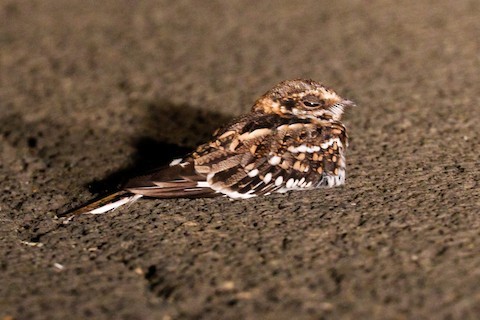
White-tailed Nightjar, male showing tawny nuchal collar, rows of white spots on wing coverts, and white edge on outer tail feathers. (Corbin Wildlife Park, Tobago; July 29, 2016.) © Kamal Mahabir
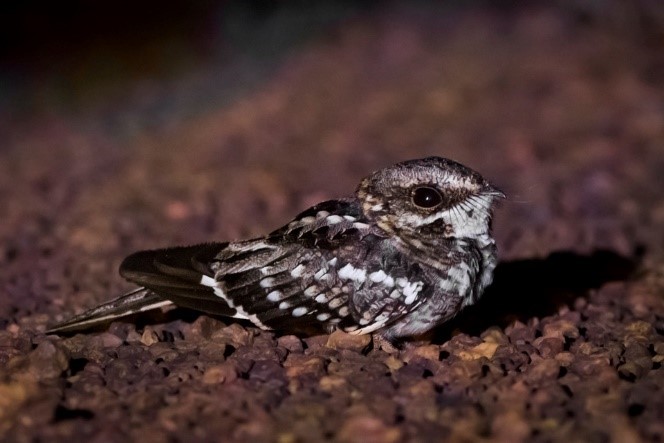
White-tailed Nightjar, male with white throat showing rows of white spots on wing coverts, part of the white band on the primaries. (Estrada Perdida, Viruá National Park, Roraima, Brazil; March 10, 2018.) © Marcelo Camacho
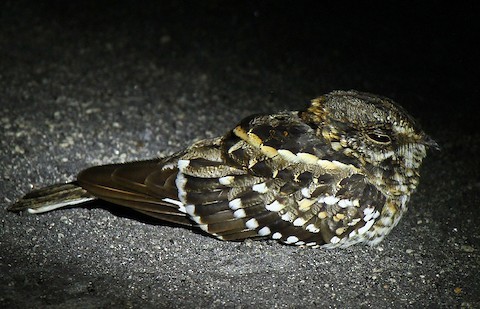
White-tailed Nightjar, male showing rows of white spots on wing coverts, part of the white band on the primaries, and white on outer tail feathers. (Rio Agua Boa, Roraima, Brazil; January 29, 2015.) © Douglas Jeffries
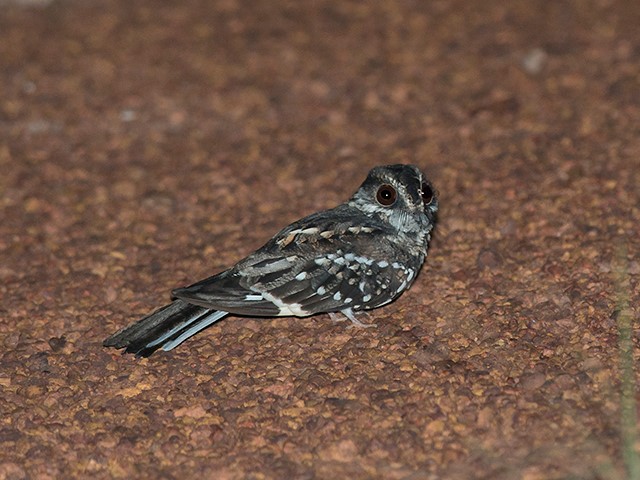
White-tailed Nightjar, male showing rows of white spots on wing coverts, part of the white band on the primaries, and white on outer tail feathers—also note pale edges on the crown. (Estrada Perdida, Viruá National Park, Roraima, Brazil; December 24, 2014.) © Sérgio Gregório
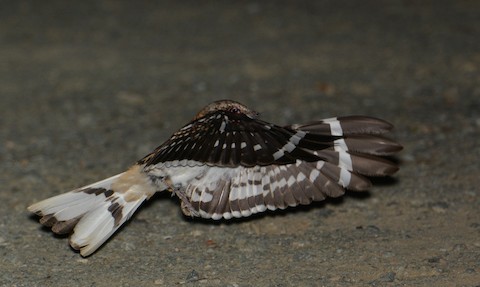
White-tailed Nightjar, male in low flight showing white undertail with dark band at the base and broad white band on primaries. (Cuffie River Nature Retreat, Tobago; May 5, 2014.) © William Stephens
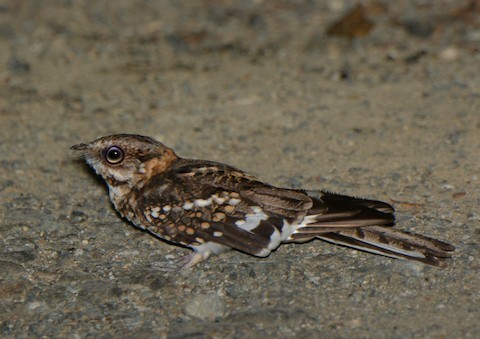
White-tailed Nightjar, male showing tawny nuchal collar and part of the white band on the primaries. (Cuffie River Nature Retreat, Tobago; May 5, 2014.) © William Stephens
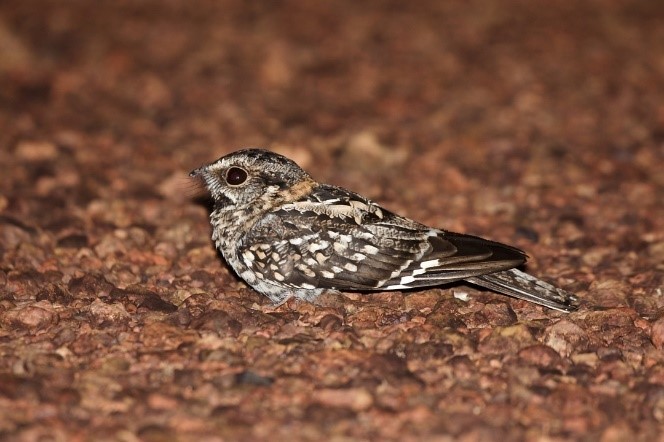
White-tailed Nightjar, male showing tawny nuchal collar, rows of white spots on wing coverts, and part of the white band on the primaries. (Estrada Perdida, Viruá National Park, Roraima, Brazil; January 20, 2019.) © Roseanne Almeida
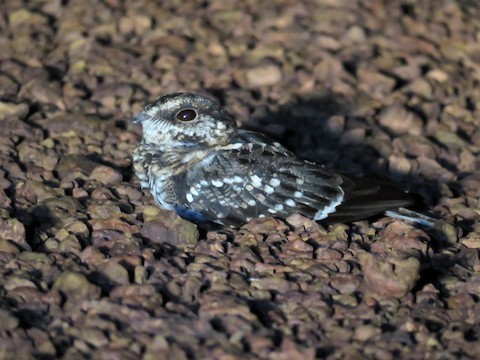
White-tailed Nightjar, male showing rows of white spots on wing coverts and part of the white band on the primaries. (Estrada Perdida, Viruá National Park, Roraima, Brazil; December 16, 2017.) © Örjan Sjögren
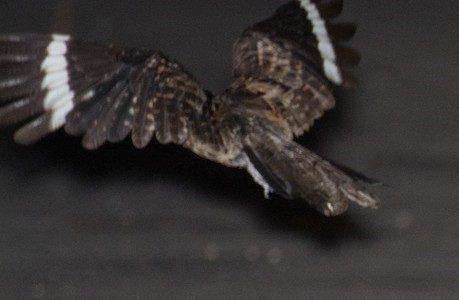
White-tailed Nightjar, male in flight showing broad white bands on primaries and white outer tail feather. (Aripo Livestock Station, Trinidad; April 30, 2014.) © William Stephens
Female is cryptically patterned overall. The female’s upperparts are generally similar to the male’s, but the underparts are usually somewhat darker and typically barred, at least on the breast.
The female’s undertail is barred, not plain white.
In flight, the female shows buffy bands on the primaries.
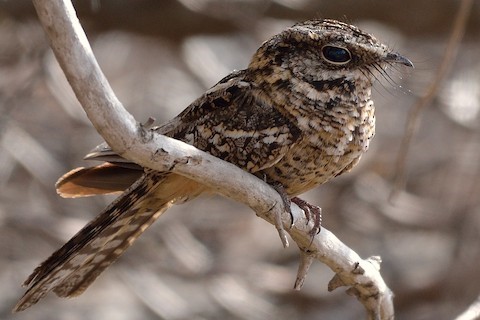
White-tailed Nightjar, female, showing barred breast and undertail. (Bubali Bird Sanctuary, Aruba; July 25, 2016.) © Michiel Oversteegen

White-tailed Nightjar, female showing barred breast and undertail. (Cuffie River Nature Retreat, Tobago; January 20, 2019.) © Susan Brauning

White-tailed Nightjar, female, showing barred breast and undertail. (Cuffie River Nature Retreat, Tobago; May 5, 2014.) © William Stephens
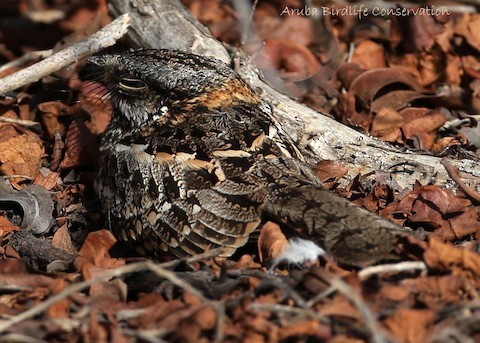
White-tailed Nightjar, female on nest, showing broad tawny nuchal collar. (Bubali Bird Sanctuary, Aruba; May 15, 2016.) © Gregory Peterson
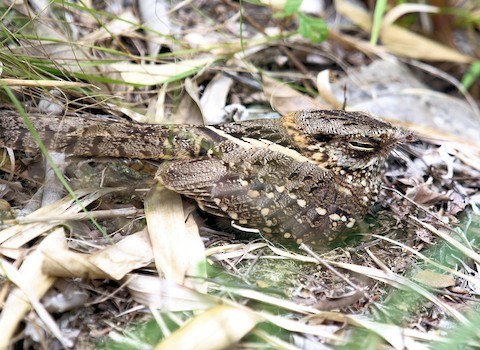
White-tailed Nightjar, female showing broad tawny nuchal collar. (Cuffie River Nature Retreat, Tobago; May 21, 2016.) © Stan Lilley
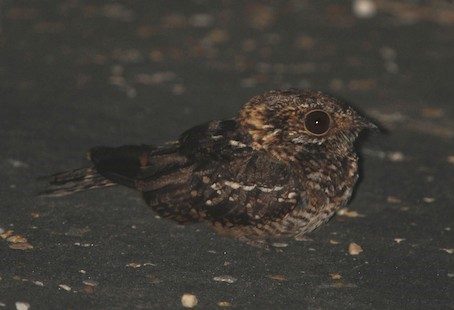
White-tailed Nightjar, female showing broad tawny nuchal collar and barred breast and undertail. (Aripo Livestock Station, Trinidad; June 16, 2013.) © Stephen Gast

White-tailed Nightjar, female showing broad barred breast. (Estrada Perdida, Viruá National Park, Roraima, Brazil; March 10, 2018.) © Anselmo d’Affonseca
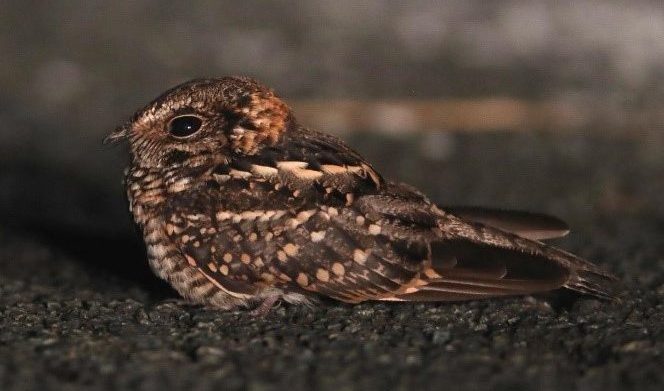
White-tailed Nightjar, female showing broad tawny nuchal collar, barred breast, and buffy band on primaries. (Tobago; November 23, 2017.) © Hal and Kirsten Snyder
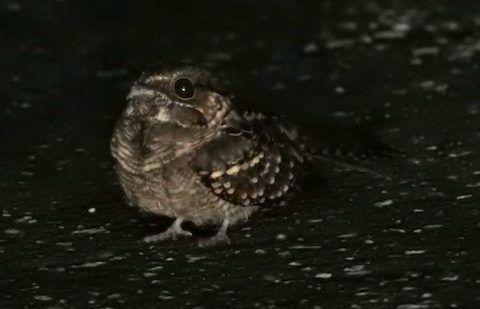
White-tailed Nightjar, female showing mostly dark underparts. (Las Baulas National Park, Costa Rica; September 12, 2018.) © Jon Iratzagorria Garay
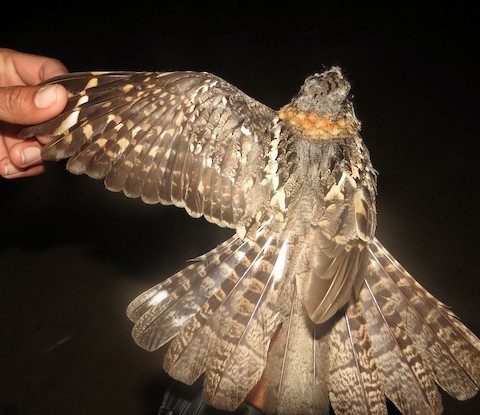
White-tailed Nightjar, female in hand, showing broad tawny nuchal collar and thin buffy band on the primaries. (Ranchería Ichichon, La Guajira, Colombia; March 31, 2016.) © Orlando Padilla
Voice. Song is a high-pitched emphatic chi-peeeeeeeeeeeeeer, a quick chip followed by a thin scream that descends and trails off at the end: The flight call is a simple weeuu:
Notes
Polytypic species consisting of six recognized subspecies.
References
Ascanio, D., G.A. Rodriguez, and R. Restall. 2017. Birds of Venezuela. Christopher Helm, London.
Cleere, N. 2019. White-tailed Nightjar (Hydropsalis cayennensis). In Handbook of the Birds of the World Alive (J. del Hoyo, A. Elliott, J. Sargatal, D.A. Christie, and E. de Juana, eds.). Lynx Edicions, Barcelona. https://www.hbw.com/node/55197. (Accessed October 30, 2019.)
Cleere, N., and D. Nurney. 1998. Nightjars: A Guide to Nightjars and Related Nightbirds. Pica Press, Sussex.
eBird. 2019. eBird: An online database of bird distribution and abundance. Cornell Lab of Ornithology, Ithaca, N.Y. http://www.ebird.org. (Accessed October 30, 2019.)
Ferraro, M.M. 2015. White-tailed Nightjar (Hydropsalis cayennensis), version 1.0. In Neotropical Birds Online (T.S. Schulenberg, ed.). Cornell Lab of Ornithology, Ithaca, N.Y. https://doi.org/10.2173/nb.whtnig1.01.
ffrench, R. 2012. A Guide to the Birds of Trinidad & Tobago (Third Edition). Cornell University Press, Ithaca, N.Y.
Garrigues, R., and R. Dean. 2014. The Birds of Costa Rica: A Field Guide (Second Edition). Cornell University Press, Ithaca, N.Y.
Holyoak, D.T. 2001. Nightjars and Their Allies. Oxford University Press.
McMullan, M., and T. Donegan. 2014, Field Guide to the Birds of Colombia (Second Edition). Fundación Proaves de Colombia, Bogotá.
Raffaele, H., J. Wiley, O. Garrido, A. Keith, and J. Raffaele. 1998. A Guide to the Birds of the West Indies. Princeton University Press, Princeton, N.J.
Ridgely, R.S., and P.J. Greenfield. 2001. The Birds of Ecuador, Volume II: Field Guide. Cornell University Press, Ithaca, N.Y.
Ridgely, R.S., and J.A. Gwynne. 1989. A Guide to the Birds of Panama (Second Edition). Princeton University Press, Princeton, N.J.
van Perlo, B. 2009. A Field Guide to the Birds of Brazil. Oxford University Press, Oxford.
Wells, J.V., and A.C. Wells. 2017. Birds of Aruba, Bonaire, and Curaçao. Cornell University Press, Ithaca, N.Y.
